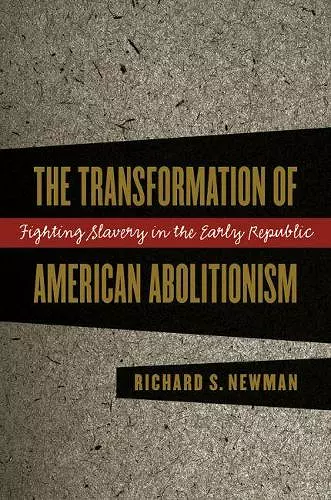The Transformation of American Abolitionism
Fighting Slavery in the Early Republic
Format:Paperback
Publisher:The University of North Carolina Press
Published:30th Apr '02
Currently unavailable, and unfortunately no date known when it will be back

How abolitionism evolved from an elite and conservative movement to a radical, grassroots reform cause; Most accounts date the birth of American abolitionism to 1831, when William Lloyd Garrison began publishing his radical antislavery newspaper, The Liberator. In fact, however, the abolition movement had been born with the American Republic. In the decades following the Revolution, abolitionists worked steadily to eliminate slavery and racial injustice, and their tactics and strategies constantly evolved. Tracing the development of the abolitionist movement from the 1770s to the 1830s, Richard Newman focuses particularly on its transformation from a conservative lobbying effort into a fiery grassroots reform cause. What began in late-eighteenth-century Pennsylvania as an elite movement espousing gradual legal reform began to change in the 1820s as black activists, female reformers, and nonelite whites pushed their way into the antislavery movement. Centered in Massachusetts, these new reformers demanded immediate emancipation, and they revolutionized abolitionist strategies and tactics - lecturing extensively, publishing gripping accounts of life in bondage, and organizing on a grassroots level. Their attitudes and actions made the abolition movement the radical cause we think of it as today.
"A most important and persuasive discussion of the early years of American abolitionism." - Waldo E. Martin Jr., University of California, Berkeley
ISBN: 9780807849989
Dimensions: unknown
Weight: 452g
272 pages
New edition